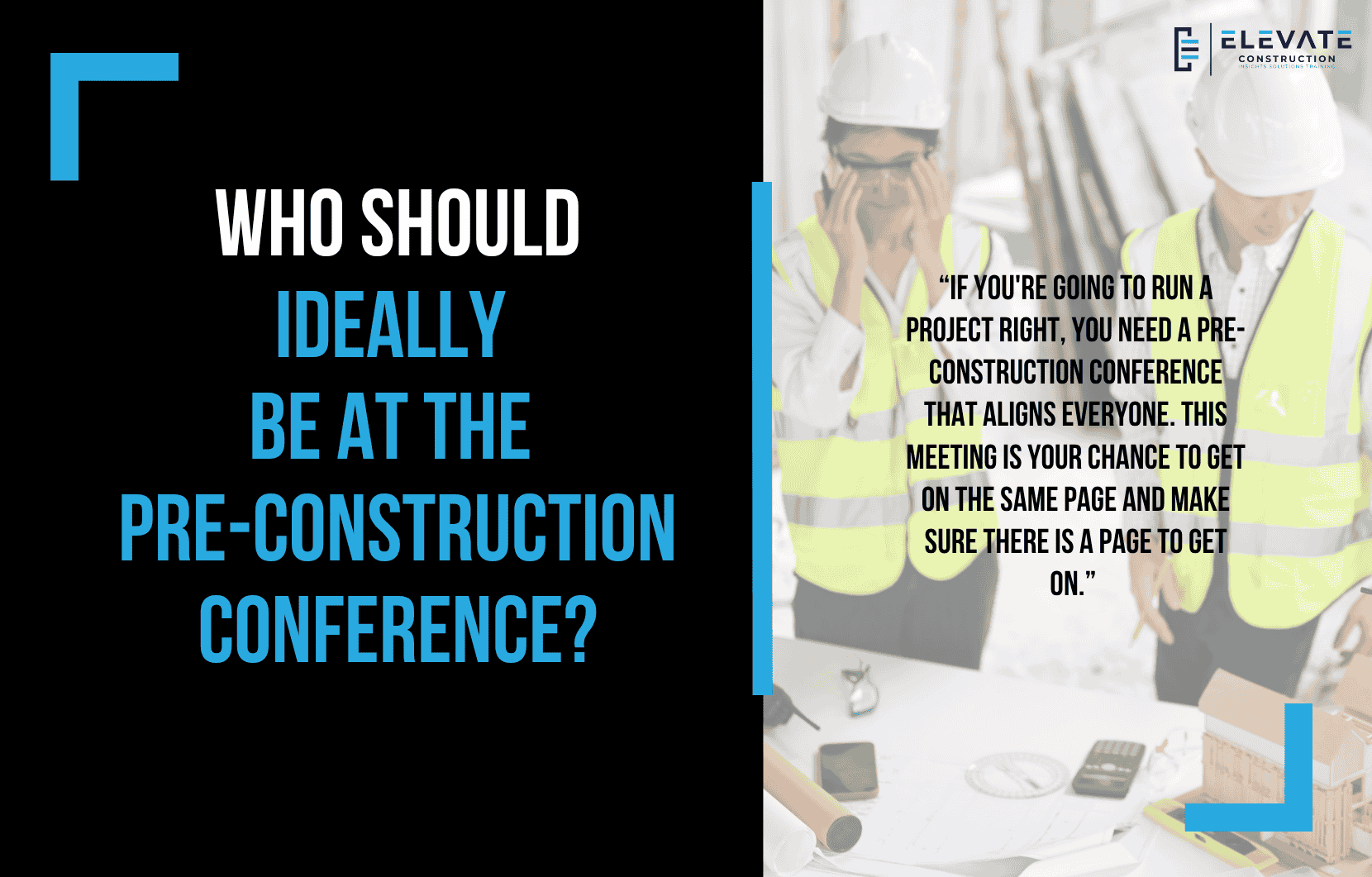Who Should Be at Your Pre-Construction Conference?
Who should ideally be at the pre-construction conference on a construction project? In this blog, I’ll walk you through exactly who should attend and why, plus a bit about what this meeting is and why it matters.
Let’s dive in.
What Is the Pre-Construction Conference?
I often talk about pre-construction in three different ways:
- Pre-Construction: Everything from concept design to CDs, to signing a prime agreement, and getting an NTP (Notice to Proceed). This is all the upfront work that supports the designers and ensures the project starts on solid ground.
- Pre-Construction Conference: This is the focus of this blog. It happens before the overall job kicks off usually 5 to 60 days prior, depending on the project. It might involve the owner or an inspector and sets the tone for how the job will be run.
- Pre-Construction Meetings: Also called pre-install or preparatory meetings, these occur about three weeks before a trade starts work on-site.
This blog is about the pre-construction conference, which aligns the whole team before boots hit the ground.
Why the Pre-Construction Conference Matters:
This meeting ensures the contractor and trade partners are fully oriented to how the project will be managed. Key topics include:
- Project management systems.
- Inspections.
- Site logistics.
- Neighbor relations.
- Quality expectations.
How you start is how the job will go. So, let’s get the right people in the room.
Who Should Be There?
- Owner or Client Representative:
They set expectations for project management systems and share their top 10 priorities whether it’s staying off the news, waterproofing concerns, or anything else critical. Their voice must be heard from day one.
- General Contractor: Project Manager & Superintendent:
As Derek Kirkland says: “The PM reads the owner’s mind. The Superintendent sees the future.” These roles must show up to listen, align, and deliver.
- Field & Project Engineers:
The PE will need to understand RFI and submittal processes, pay application flows, survey requirements, and quality control. Their early involvement drives execution and buy-in.
- Architects & Engineers (Design Team):
The design team must explain submittal expectations, turnaround times, and clarify design responsibilities. Their presence ensures alignment with owner vision and code requirements.
- Key Trade Partners:
Electrical, mechanical, plumbing, concrete, framing, any of the driving trades. Why? They likely have experience with the owner or inspector and can add credibility and clarity. Don’t let important messages get lost in translation.
- Corporate Support (Optional but Helpful):
Scheduling managers, quality or safety support staff, if they will play a key role, they should attend. It’s better to over-communicate early.
- Other Stakeholders:
- Project Inspector (especially the lead inspector).
- Adjacent or future Facilities Managers.
- Anyone else with a stake in project execution and alignment.
Final Thoughts
If you’re going to run a project right, you need a pre-construction conference that aligns everyone. This meeting is your chance to get on the same page and make sure there is a page to get on.
If you want to learn more we have:
-Takt Virtual Training: (Click here)
-Check out our Youtube channel for more info: (Click here)
-Listen to the Elevate Construction podcast: (Click here)
-Check out our training programs and certifications: (Click here)
-The Takt Book: (Click here)
Discover Jason’s Expertise:
Meet Jason Schroeder, the driving force behind Elevate Construction IST. As the company’s owner and principal consultant, he’s dedicated to taking construction to new heights. With a wealth of industry experience, he’s crafted the Field Engineer Boot Camp and Superintendent Boot Camp – intensive training programs engineered to cultivate top-tier leaders capable of steering their teams towards success. Jason’s vision? To expand his training initiatives across the nation, empowering construction firms to soar to unprecedented levels of excellence.
On we go

